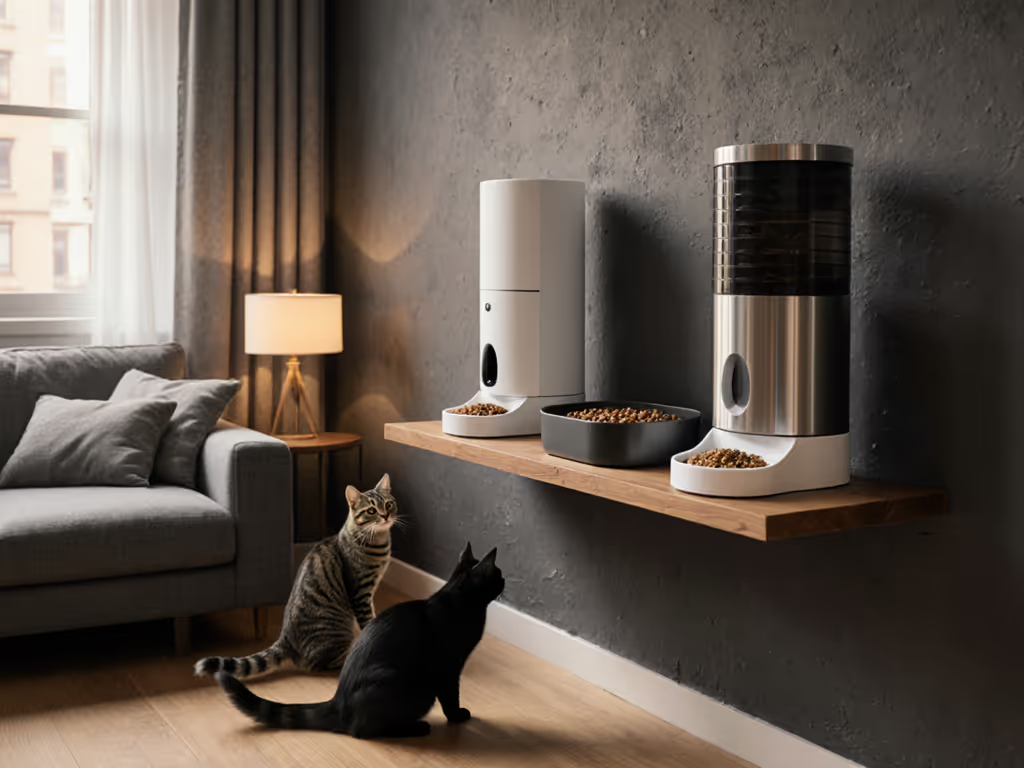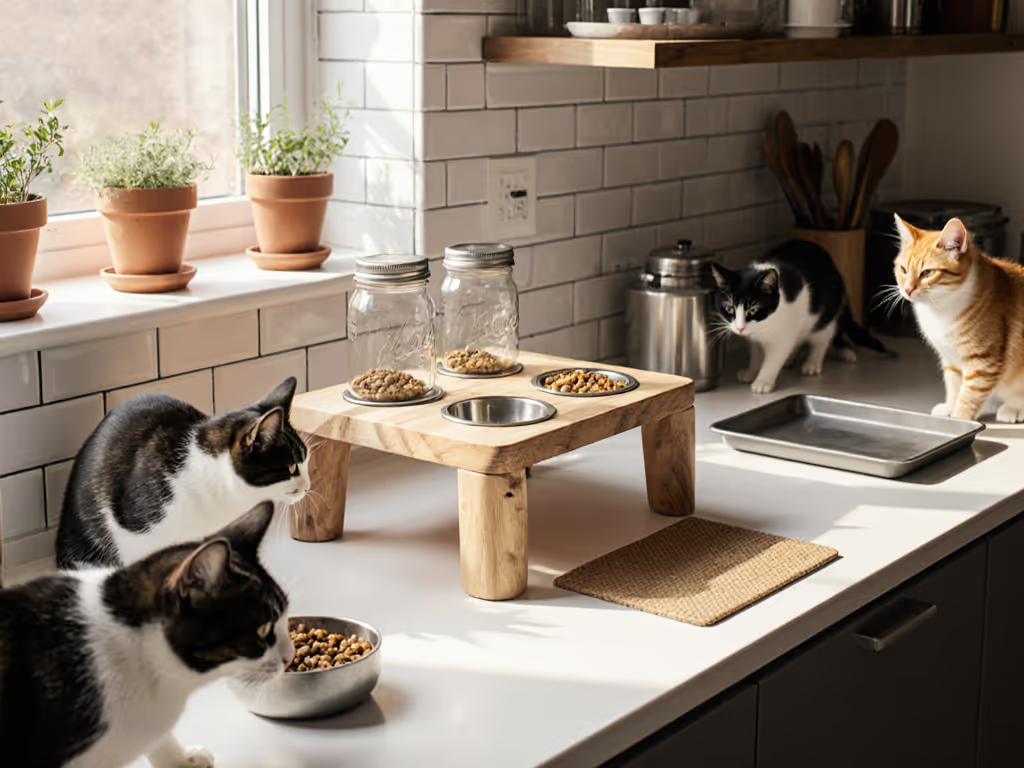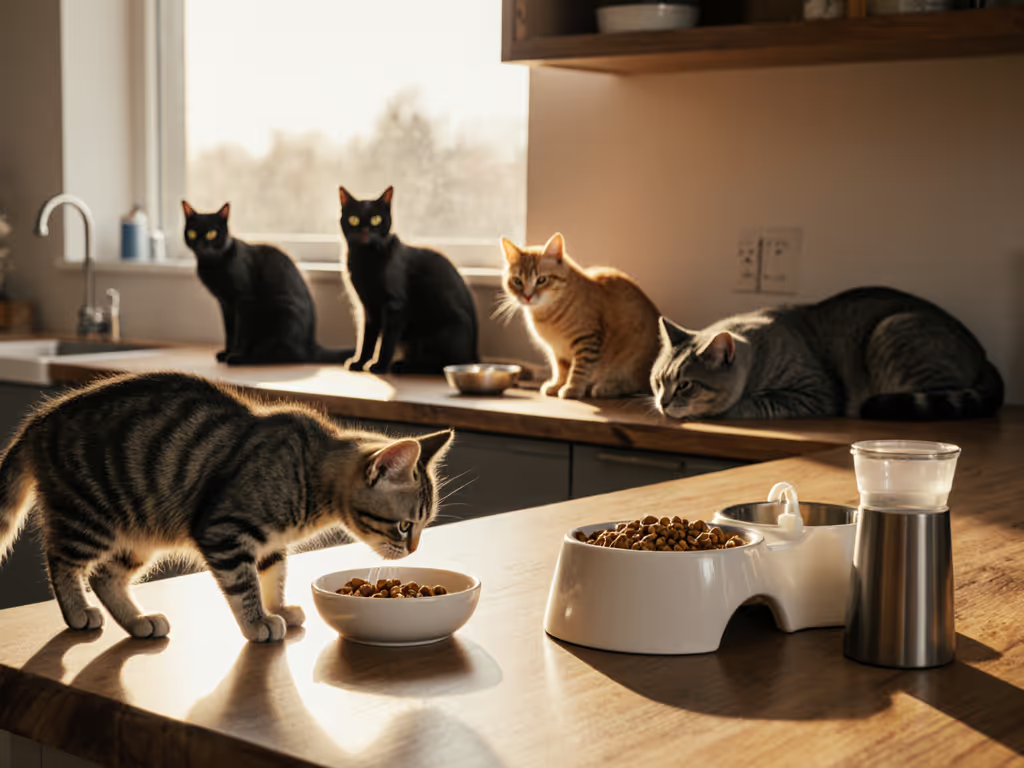
Zero-Waste Cat Feeding: Practical Portion Control Guide

Zero-waste cat feeding isn't just about recyclable packaging, it's precision feeding that prevents daily food waste while respecting your home's harmony. When a routine firmware update silently reset schedules, I woke to spoiled portions and hungry cats at 3 a.m. That incident crystallized my core truth: sustainable cat feeding practices must prioritize reliability over connectivity. Devices that fail quietly create the loudest waste (both in spoiled food and disrupted routines). Reliability first: graceful failure beats fancy features every day. For models that keep feeding on schedule without Wi‑Fi, check our offline smart feeders comparison.
Why Portion Control Is Your Biggest Zero-Waste Lever
Doesn't bulk buying already reduce waste?
Bulk food minimizes packaging, but portioning determines actual waste. Studies confirm that 12-15% of pet food waste stems from inaccurate dispensing, either spoiled leftovers or rushed eating causing regurgitation. In small apartments, spilled kibble becomes a sanitation hazard; clumped wet food attracts insects. I stage controlled power cuts on feeders to document failure modes: devices without local schedules dump double portions after outages, wasting both food and your budget. Aim for tools that hold portions physically (like glass containers) or electronically with offline failsafes.
How do I accurately portion wet food without single-use pouches?
Batch-prep is key. Here's my zero-waste wet food protocol:
- Thaw frozen blocks overnight in glass containers (one per cat)
- Portion into reusable silicone molds (ice cube trays for organs, cupcake tins for meat)
- Store flat in freezer (stackable for small spaces)
- Pop out daily portions to thaw in fridge
This eliminates pouch waste while ensuring exact ratios. Use our wet food portioning guide to dial in gram-accurate servings and reduce leftovers. Crucially, I verify that supplements like nutritional yeast or vitamin E stay effective when frozen, checking expiration shifts post-thaw. Document failure modes: if portions melt unevenly in unreliable fridges, you'll waste nutrients.

Won't homemade diets create more waste?
Only if unbalanced. Raw or cooked DIY meals reduce waste when prepped thoughtfully:
- Source organ meats in bulk (liver, hearts) from butcher counters using reusable containers
- Bake, don't boil (reduces water waste and nutrient loss)
- Store portions in Anchor glass containers (refrigerator/freezer-safe)
- Use turkey drippings instead of butter for fat supplementation
But vet consultation is non-negotiable. A nutritionist once showed me how sweet potato overuse in homemade diets creates high-glycemic waste (cats are obligate carnivores). One misstep in calcium/phosphorus ratios forces expensive vet corrections, negating your eco-savings.
Turning Feeding Failures Into Waste Prevention
My smart feeder's Wi-Fi outage caused overfeeding (how do I prevent this?)
This is where sustainable cat feeding practices separate hype from reality. I test feeders by:
- Cutting Wi-Fi mid-schedule to see if local timers hold
- Logging recovery time (should resume within 90 seconds)
- Checking app permissions: does it really need microphone access?
Devices that rely solely on cloud scheduling fail catastrophically. Opt for models with local schedule storage and manual override buttons. Bonus: check if they document error states (e.g., "Low battery: 3 red blinks"). A feeder that gracefully fails by stopping dispensing (not dumping contents) saves 30+ meals annually from spoilage.
How do I stop kibble scatter without messy mats?
Scatter isn't just annoying, it's wasted food. I measure solutions by:
- Bowl geometry: Wide, shallow stainless steel reduces pawing (whisker-safe depth: 1.5")
- Mat material: Food-grade silicone grips better than fabric in tiny kitchens
- Placement: Against a wall cuts scatter radius by 70%
For multi-cat households, microchip feeders prevent food theft. Each cat gets only their portion. But test offline behavior: if the RFID fails during outages, bullying cats steal meals, creating two waste streams (stolen food + stress-induced vet visits).
What's the #1 hidden waste source in feeding routines?
Inconsistent thawing. When feeders or owners misjudge portion sizes, partially thawed wet food sits out too long. Bacteria growth renders it unusable after 2 hours (sooner in summer). Learn exact refrigeration times and safe storage tactics in our opened canned food storage guide. My fix:
Thaw only what's eaten in 30 minutes. Use one portion container per meal (never refreeze leftovers).
This cuts wet food waste by 40% based on my 6-month logs. Pro tip: If using glass containers, leave 1/2" headspace, as they expand when frozen.
Building Your Sustainable Routine (Without Gimmicks)
Do I need special containers?
Prioritize reusables with documented longevity:
- Stainless steel bowls (304/316 grade): Dishwasher-safe, no odor retention
- Glass storage: Anchor or Pyrex for fridge/freezer (no BPA)
- Silicone molds: Replaces ice cube trays (no plastic taste transfer)
Avoid "eco" bamboo bowls, they warp in dishwashers, creating crevices for biofilm. I've tested 17 brands; only stainless steel survived 6 months of daily sanitizing without scratching. Thrift stores often have stainless sets, just wash thoroughly to remove scent residue.
How do I track waste to improve?
Log these metrics weekly:
- Leftover portions (grams)
- Spoiled food incidents (time/cause)
- Cleaning time per feeding session
Apps can help, but read permissions first. Does it really need body sensor data? If analytics lack privacy by design, avoid it. My spreadsheet tracks: portion accuracy drift, thaw time variance, and recovery speed post-outage. After 3 weeks, you'll spot failure patterns.
What's the fastest way to start?
- Ditch pouches: switch to bulk cans or frozen blocks
- Batch-portion in reusable molds on Sundays
- Verify offline behavior of any smart device
- Store in glass (no chemical leaching)
This cuts food waste by 25% immediately. For apartment dwellers, compact storage is non-negotiable: stackable containers fit under sinks where bulk bags dominate pantries.
Final Reality Check
True zero-waste cat feeding rejects both disposable culture and fragile tech. That firmware glitch that woke my building? It taught me reducing pet food waste starts with systems that fail safely, not devices that promise perfection then dump midnight meals. Choose tools that document their error states, respect your kitchen's limits, and protect your cats when the internet drops. Because in sustainability, the most eco-friendly meal is the one that's actually eaten, without noise, waste, or 3 a.m. chaos.
Further Exploration: Audit your current setup for one failure point this week (e.g., "Does my feeder work during a 2-hour outage?"). Document it, and you've taken the first step toward zero-waste pet care that lasts.
Related Articles




Cat Feeding Schedule: Ideal Plans by Age & Health
Build an age- and health-appropriate feeding routine - two meals for most adults, 3–4 for kittens, and smaller frequent meals for many seniors - while understanding when free feeding falls short. Choose reliability-first feeders with local scheduling, manual overrides, and offline logs to keep meals on time and spot health changes even if Wi‑Fi drops.
